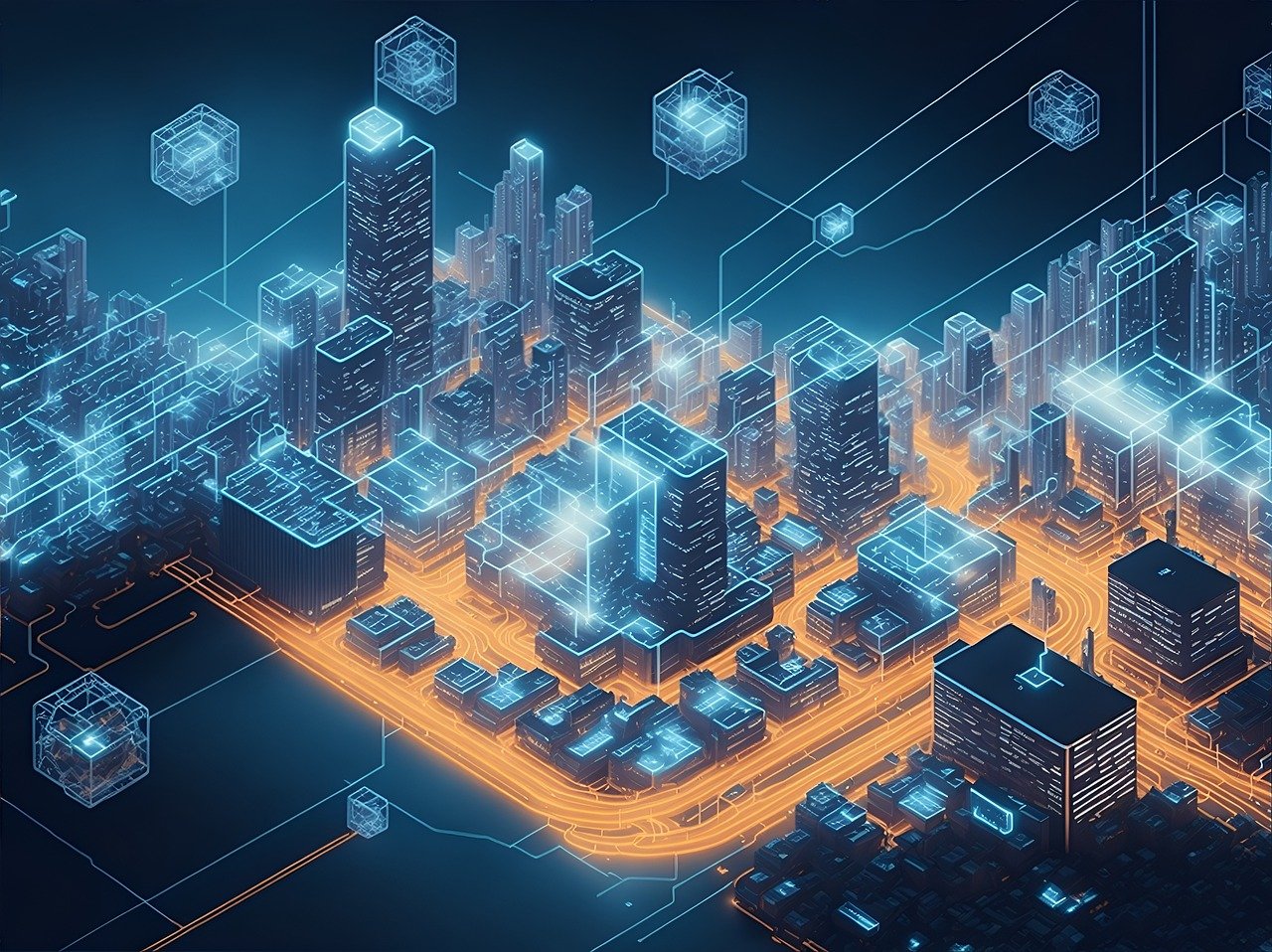Smart cities represent the integration of technology and data to manage urban areas more efficiently, sustainably, and effectively. The concept involves leveraging the Internet of Things (IoT), big data, artificial intelligence (AI), and other advanced technologies to enhance the quality of life for citizens, improve infrastructure, and optimize urban services. Here’s a closer look at the key aspects of smart cities:
1. Key Components of Smart Cities
- IoT and Connectivity: Smart cities rely on a vast network of connected devices, sensors, and systems that collect and share data in real-time. This connectivity enables the monitoring of everything from traffic flow to air quality, allowing for responsive and data-driven decision-making.
- Big Data and Analytics: The data generated by IoT devices is analyzed to identify patterns, predict trends, and make informed decisions. For example, traffic data can be used to optimize signal timings and reduce congestion, while energy consumption data can help in managing utilities more efficiently.
- Sustainable Infrastructure: Smart cities aim to minimize their environmental impact through energy-efficient buildings, smart grids, and sustainable transportation systems. Renewable energy sources, electric vehicles, and waste management systems are key components of this infrastructure.
- Citizen Engagement: Smart cities use technology to enhance citizen participation and engagement. Mobile apps and platforms allow residents to report issues, access public services, and participate in city planning processes.
2. Examples of Smart Cities
- Barcelona, Spain: Barcelona is one of the pioneers of the smart city movement. The city has implemented smart street lighting, which adjusts brightness based on pedestrian activity, and a smart waste management system that optimizes collection routes based on real-time data.
- Singapore: Singapore’s Smart Nation initiative aims to harness technology to improve living conditions, create economic opportunities, and build stronger communities. The city-state uses data analytics and AI to manage urban challenges, such as traffic congestion and resource allocation.
- Songdo, South Korea: Songdo is a purpose-built smart city that incorporates the latest technologies from the ground up. The city features a centralized control system that monitors everything from traffic to energy use, and residents have access to high-speed internet and smart home technologies.
3. Benefits of Smart Cities
- Enhanced Efficiency: Smart cities optimize the use of resources, reduce waste, and improve the efficiency of public services, from transportation to healthcare.
- Sustainability: By integrating renewable energy sources, reducing emissions, and promoting sustainable practices, smart cities contribute to environmental conservation and combat climate change.
- Improved Quality of Life: Citizens benefit from improved public services, safer environments, and greater convenience. For example, smart healthcare systems can provide better access to medical services and more efficient emergency response.
- Economic Growth: The implementation of smart city technologies can attract investment, foster innovation, and create new job opportunities, contributing to economic development.
4. Challenges and Considerations
- Privacy and Security: The extensive data collection in smart cities raises concerns about privacy and cybersecurity. Ensuring that data is protected and used ethically is a significant challenge.
- Cost and Implementation: Developing and maintaining smart city infrastructure requires substantial investment. Cities must balance the cost of these technologies with their potential benefits.
- Digital Divide: The reliance on technology can exacerbate inequalities if not everyone has access to the necessary tools and services. Ensuring inclusivity is critical to the success of smart cities.
5. Future of Smart Cities
- AI and Automation: As AI technology advances, smart cities will increasingly rely on automation to manage urban systems. This could include autonomous vehicles, smart grids, and predictive maintenance for infrastructure.
- Resilience and Adaptation: Future smart cities will focus on resilience, particularly in the face of climate change. This includes designing infrastructure that can withstand extreme weather and integrating disaster response systems.
- Global Collaboration: Smart cities will likely become part of a global network, sharing data and best practices to address common urban challenges.
Smart cities represent a significant step forward in urban development, promising a more sustainable, efficient, and livable future for urban populations worldwide. However, they also require careful planning and consideration to ensure that the benefits are accessible to all citizens.
Share this content:

